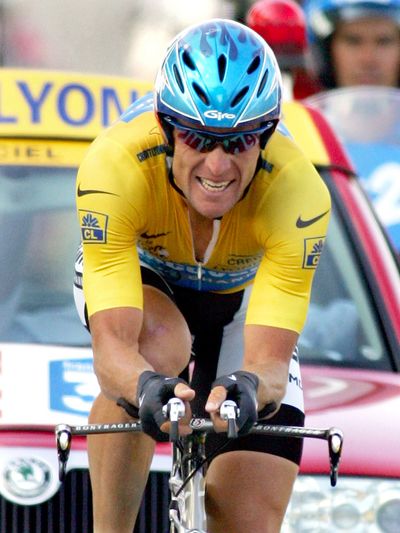Despite allegations, Armstrong wins again

Lance Armstrong licked ’em again. Always has. Always will.
Like cancer and the Tour de France, the federal government turned out to be just another challenge to conquer. On his trophy wall, next to those bright yellow jerseys he got for winning the world’s toughest bike race seven times, Armstrong can now hang the scalp of steroid cop Jeff Novitzky.
Zip. Nada.
Those aren’t the exact words U.S. Attorney Andre Birotte Jr. used to announce that the criminal investigation of Armstrong was over.
But it amounted to the same thing.
There’ll be no charges stemming from the vivid but unproven accusations made by two of Armstrong’s former teammates that he doped and lied on his way to global stardom, that he wasn’t really any different from all the other cyclists of his era whose use of banned drugs and blood transfusions turned the sport into a freak show.
Victorious again, Armstrong can now go back completely untroubled to the business of being an inspiration to athletes and to those fighting the disease he beat.
“I look forward to continuing my life as a father, a competitor, and an advocate in the fight against cancer without this distraction,” he said.
Armstrong always said he rode clean. He had us believe that although those he beat were injecting just to keep up with him, his magic recipe for success was nothing more than ability, grit, genes, teamwork, smarts, preparation, and a dash of luck.
Many claimed that wasn’t true, but no one produced the absolutely incontrovertible proof needed to believe them.
Nor will they. Because this is the end of it.
If Novitzky and the other federal agents and prosecutors who dug and gathered testimony for months and quietly traveled to Europe in search of evidence couldn’t find anything of substance, then no one will.
European officials spoke of Novitzky with awe. The Eliot Ness of anti-doping. The man who hounded baseball home run king Barry Bonds, who wrung a confession from Olympic sprinter Marion Jones, who dug through garbage at the Bay Area Laboratory Co-Operative for evidence that it supplied steroids.
Novitzky is a bloodhound, he won’t let go, this time, Armstrong is toast, was what some European officials thought after meeting him and discussing how they might help the U.S. probe.
So much for that.
“Extraordinary accusations must be followed with extraordinary proof,” Armstrong once said of claims he doped.
Former teammates Floyd Landis and Tyler Hamilton’s allegations certainly were extraordinary.
Hamilton told “60 Minutes” he saw Armstrong take performance- enhancing drugs and receive a blood transfusion.
Among other things, Landis claimed that in 2004, “the entire team” stopped on a remote mountain road to have transfusions.
But both were also ex-dopers who had steadfastly lied about their own cheating before later admitting it.
Two proven liars against an all-conquering hero with powerful friends and rich enough to hire the best lawyers?
No chance. And so it ends.
But there will always be one unanswerable question: How did Armstrong do it?
The story of the man who rode back from near-death to conquer the Tour not just once but a record seven times, consecutively, is so miraculous that it created many true believers and many who truly believe that it is too good to be true. And then there are those in the middle who don’t know who or what to believe.
I saw him ride. Never seen anything quite like it. Astounding. But I still can’t be sure how he did it.
And now I never will.